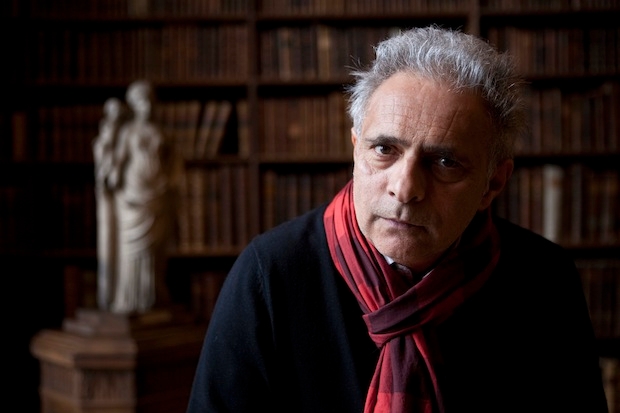It is six years since Hanif Kureishi’s last novel Something to Tell You, a kaleidoscopic meditation on life and death seen through the eyes of a Freudian analyst striving to make sense of middle age. It was regarded as a return to the highs of The Buddha of Suburbia, Kureishi’s first and still best-loved novel, populated by irresistible characters who ploughed through life with a feckless sexual voracity. The Last Word displays a similar chutzpah, although things are hampered by an unlikely story which over-sexualises every character in the claustrophobic atmosphere of a shabby country house.
The plot, which has Harry, an indolent young biographer, enter the West Country purdah of Mamoon, an eminent Indian-born writer, comes burdened by whispers that this is a fictional account of Patrick French’s commission to write the authorised biography of V.S. Naipaul. Indeed it is hard to think of the novel on its own terms as Harry unearths various accounts of a priapic sage whose relationships with women teeter on the edge of sexual sadism. Mamoon is capricious, arrogant and insecure, answering Harry’s questions with trite pronouncements: ‘An artist, you must remember, is at his best in his art.’ The problem is that although this is Mamoon’s attempt to deflect Harry from the truth, the reader is never allowed to see the full extent of his brilliance. There are no intellectual set pieces, no real hint at the razzle-dazzle which has earned Mamoon a place on the world’s literary stage.
It’s much more fun when we see him being scurrilous about E.M. Forster (‘He spent 30 years staring out of the window when he wasn’t mooning over bus conductors and other Pakis’) or Jean Rhys (‘the only female writer in English you’d want to sleep with’).
However amusing, the characters are rarely likeable. Harry in particular is a difficult creation. He is a privileged west Londoner whose Lautréamont-quoting mother’s tragic death has transformed him into a rather cruel lothario. He simultaneously patronises and mesmerises the two women in his life, his anxious ex-model girlfriend Alice and worldly-wise village girl Julia who falls unquestioningly for his preppy charm.
As is often the case with Kureishi, the secondary characters threaten to overwhelm the narrative, drawn as they are with the sharpness of a Gerald Scarfe cartoon. In The Last Word we have Mamoon’s misused wife, Liana, a histrionic Italian prone to melodramatic utterances. ‘You know me well enough, Harry, to see that I am a woman of longing.’
Mamoon’s country-life exile is sometimes well-realised, notably a hilariously bleak birthday celebration for the writer at a local restaurant attended by sycophants. But more often we are given broad-brush, offensive snapshots of provincial life: ‘The people looked pasty-faced, slow-moving, ill-kempt…’
And that is perhaps the problem with The Last Word. For all its perspicacity about intellectual heavyweights and its amusing insights into publishing, the novel fails when Kureishi tries to give a state-of-the-nation commentary or indeed attempts realism. It takes place in a strange hinterland where domestics curtsey and literary success ensures a television career. Kureishi’s best works display emotional and philosophical truth. For all its cartoonish zest, The Last Word is ultimately a rather cruel, unlovable novel.






Comments